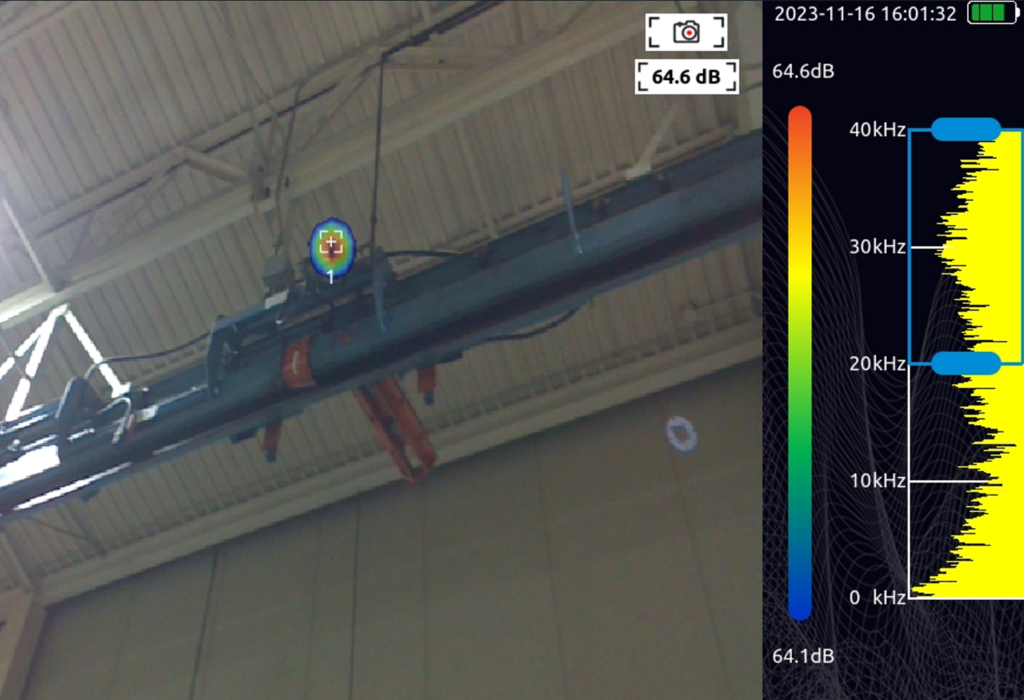The development of acoustic imagers has transformed the way compressed air leak audits are done, saving time for the user.
Acoustic imagers are advanced tools used to detect gas leaks by capturing and visualizing high-frequency sounds that are typically inaudible to the human ear. When compressed air or gas escapes through cracks, holes, or loose fittings, it produces ultrasonic sounds. These high-frequency signals are detected by the imager’s array of sensitive microphones, which are specifically designed to pick up these ultrasonic emissions.
Once the device detects the sound, it converts the acoustic data into a visual representation known as a sound map. This sound map is overlaid onto a real-time image or video of the environment, making it easy to pinpoint the precise location of the leak. The visual output typically uses color coding, where louder or higher-frequency sounds are displayed as bright spots or hotspots, guiding users to the source of the problem.

One of the key features of acoustic imagers is their ability to filter out ambient noise. In noisy industrial environments, background sounds can make traditional leak detection methods challenging. Acoustic imagers use advanced software to isolate the ultrasonic frequencies caused by leaks, ensuring accuracy even in complex and high-noise conditions.
The use of acoustic imagers offers several advantages. They allow for non-intrusive inspections, so equipment does not need to be shut down during the process. These devices are fast and efficient, enabling users to scan large facilities quickly. They are also highly versatile, capable of detecting leaks in a variety of gases, including compressed air, nitrogen, and other industrial gases. By identifying and visualizing leaks in real-time, acoustic imagers help save energy, reduce operating costs, and improve the reliability of compressed air and gas systems.
These tools, while expensive, are becoming an essential tool for professionals aiming to save leak audit time, optimize energy use and maintain the reliability of their systems.
Filed Under: Air Compressors, Air Preparation, Components Oil Coolers, Compressed Air Technologies, Pneumatic Tips